Case Study: Deforestation in the Amazon Rainforest
Deforestation in the amazon rainforest.
The Amazon rainforest area spans about 8,200,000km 2 across 9 countries, making it the largest rainforest in the world. The tree coverage in 1970 was 4.1m km 2 . In 2018, it was 3.3m km 2 . Between 2001 and 2013, the causes of Amazonian deforestation were:


Pasture and cattle ranching = 63%
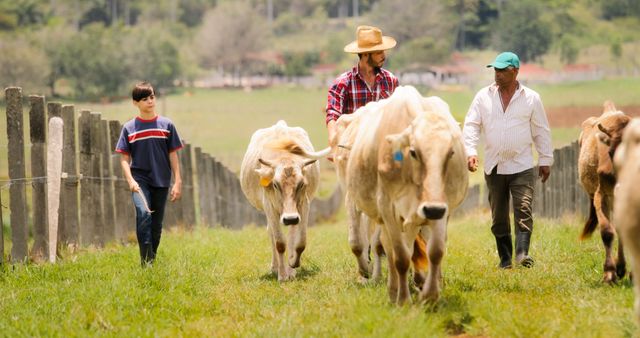
Small-scale, subsistence farmers = 12%

Commercial crop farming = 7%

Tree felling and logging = 6%

Other activities = 3%
- E.g. plantations, mining, road-building, and construction.
Impacts of Deforestation in the Amazon
Deforestation in the Amazon rainforest has the following environmental and economic impacts:
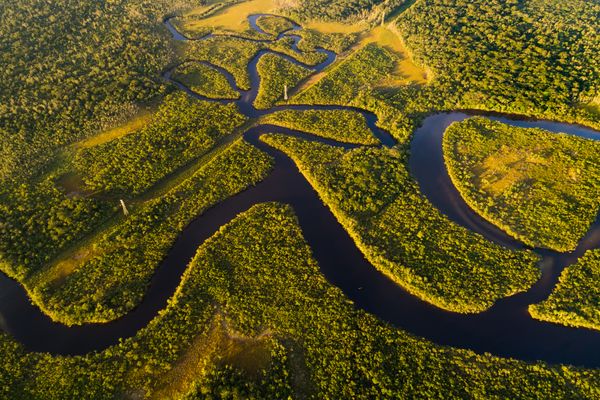
Environmental impact of Amazonian deforestation
- Photosynthesis by trees in the Amazon absorbs 5% of the world's carbon emissions each year (2bn tons of CO2).
- 100 billion tonnes of carbon are stored in the wood of the trees in the Amazon.
- If the Amazon were completely deforested, it would release the 100bn tonnes and also reduce the amount of carbon dioxide taken out of the atmosphere by 2bn tons each year.
- Trees anchor soil in the ground, bound to their roots. Deforestation damages the topsoil and once this has happened, the fertility of the ground is seriously damaged.
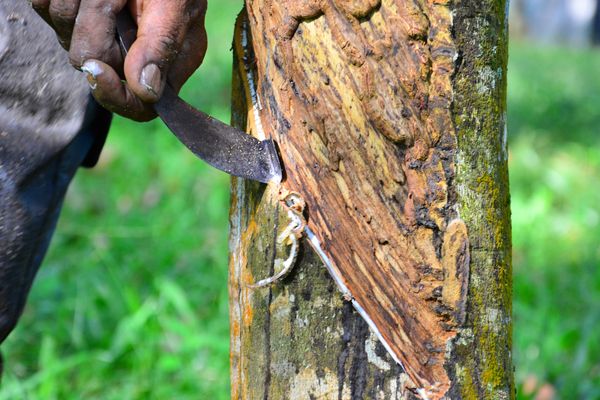

Economic impact of Amazonian deforestation
- Deforestation has fuelled the economic development of poor countries.
- In 2018, Brazil exported $28bn worth of metals. The mining industry creates jobs, exports and helps increase Brazilian people's standard of living.
- Similarly, hydroelectric power plants and cattle farms help to create jobs.
- In 2018, Brazil became the world's largest exporter of beef.
- Rio Tinto, an iron ore mining company employs 47,000 people globally and thousands of these are in Brazil.

The rate of deforestation in the Amazon
- In 2015, the Brazilian President Dilma Rousseff claimed that the rate of deforestation had fallen by 83% and that actually Brazil was going to reforest the Amazon.
- However, the policies under President Temer and President Bolsonaro has reversed Rousseff's plan. In 2019, under Bolsonaro, the rate of deforestation was increasing again.
1 The Challenge of Natural Hazards
1.1 Natural Hazards
1.1.1 Natural Hazards
1.1.2 Types of Natural Hazards
1.1.3 Factors Affecting Risk
1.1.4 People Affecting Risk
1.1.5 Ability to Cope With Natural Hazards
1.1.6 How Serious Are Natural Hazards?
1.1.7 End of Topic Test - Natural Hazards
1.1.8 Exam-Style Questions - Natural Hazards
1.2 Tectonic Hazards
1.2.1 The Earth's Layers
1.2.2 Tectonic Plates
1.2.3 The Earth's Tectonic Plates
1.2.4 Convection Currents
1.2.5 Plate Margins
1.2.6 Volcanoes
1.2.7 Volcano Eruptions
1.2.8 Effects of Volcanoes
1.2.9 Primary Effects of Volcanoes
1.2.10 Secondary Effects of Volcanoes
1.2.11 Responses to Volcanic Eruptions
1.2.12 Immediate Responses to Volcanoes
1.2.13 Long-Term Responses to Volcanoes
1.2.14 Earthquakes
1.2.15 Earthquakes at Different Plate Margins
1.2.16 What is an Earthquake?
1.2.17 Measuring Earthquakes
1.2.18 Immediate Responses to Earthquakes
1.2.19 Long-Term Responses to Earthquakes
1.2.20 Case Studies: The L'Aquila Earthquake
1.2.21 Case Studies: The Kashmir Earthquake
1.2.22 Earthquake Case Study: Chile 2010
1.2.23 Earthquake Case Study: Nepal 2015
1.2.24 Reducing the Impact of Tectonic Hazards
1.2.25 Protecting & Planning
1.2.26 Living with Tectonic Hazards 2
1.2.27 End of Topic Test - Tectonic Hazards
1.2.28 Exam-Style Questions - Tectonic Hazards
1.2.29 Tectonic Hazards - Statistical Skills
1.3 Weather Hazards
1.3.1 Winds & Pressure
1.3.2 The Global Atmospheric Circulation Model
1.3.3 Surface Winds
1.3.4 UK Weather Hazards
1.3.5 Changing Weather in the UK
1.3.6 Tropical Storms
1.3.7 Tropical Storm Causes
1.3.8 Features of Tropical Storms
1.3.9 The Structure of Tropical Storms
1.3.10 The Effect of Climate Change on Tropical Storms
1.3.11 The Effects of Tropical Storms
1.3.12 Responses to Tropical Storms
1.3.13 Reducing the Effects of Tropical Storms
1.3.14 Tropical Storms Case Study: Katrina
1.3.15 Tropical Storms Case Study: Haiyan
1.3.16 UK Weather Hazards Case Study: Somerset 2014
1.3.17 End of Topic Test - Weather Hazards
1.3.18 Exam-Style Questions - Weather Hazards
1.3.19 Weather Hazards - Statistical Skills
1.4 Climate Change
1.4.1 Climate Change
1.4.2 Evidence for Climate Change
1.4.3 Natural Causes of Climate Change
1.4.4 Human Causes of Climate Change
1.4.5 Effects of Climate Change on the Environment
1.4.6 Effects of Climate Change on People
1.4.7 Climate Change Mitigation Strategies
1.4.8 Adaptation to Climate Change
1.4.9 End of Topic Test - Climate Change
1.4.10 Exam-Style Questions - Climate Change
1.4.11 Climate Change - Statistical Skills
2 The Living World
2.1 Ecosystems
2.1.1 Ecosystems
2.1.2 Food Chains & Webs
2.1.3 Ecosystem Cascades
2.1.4 Global Ecosystems
2.1.5 Ecosystem Case Study: Freshwater Ponds
2.2 Tropical Rainforests
2.2.1 Tropical Rainforests
2.2.2 Interdependence of Tropical Rainforests
2.2.3 Adaptations of Plants to Rainforests
2.2.4 Adaptations of Animals to Rainforests
2.2.5 Biodiversity of Tropical Rainforests
2.2.6 Deforestation
2.2.7 Impacts of Deforestation
2.2.8 Case Study: Deforestation in the Amazon Rainforest
2.2.9 Why Protect Rainforests?
2.2.10 Sustainable Management of Rainforests
2.2.11 Case Study: Malaysian Rainforest
2.2.12 End of Topic Test - Tropical Rainforests
2.2.13 Exam-Style Questions - Tropical Rainforests
2.2.14 Deforestation - Statistical Skills
2.3 Hot Deserts
2.3.1 Hot Deserts
2.3.2 Interdependence in Hot Deserts
2.3.3 Adaptation of Plants to Hot Deserts
2.3.4 Adaptation of Animals to Hot Deserts
2.3.5 Biodiversity in Hot Deserts
2.3.6 Case Study: Sahara Desert
2.3.7 Desertification
2.3.8 Reducing the Risk of Desertification
2.3.9 Case Study: Thar Desert
2.3.10 End of Topic Test - Hot Deserts
2.3.11 Exam-Style Questions - Hot Deserts
2.4 Tundra & Polar Environments
2.4.1 Overview of Cold Environments
2.4.2 Interdependence of Cold Environments
2.4.3 Adaptations of Plants to Cold Environments
2.4.4 Adaptations of Animals to Cold Environments
2.4.5 Biodiversity in Cold Environments
2.4.6 Case Study: Alaska
2.4.7 Sustainable Management
2.4.8 Case Study: Svalbard
2.4.9 End of Topic Test - Tundra & Polar Environments
2.4.10 Exam-Style Questions - Cold Environments
3 Physical Landscapes in the UK
3.1 The UK Physical Landscape
3.1.1 The UK Physical Landscape
3.1.2 Examples of the UK's Landscape
3.2 Coastal Landscapes in the UK
3.2.1 Types of Wave
3.2.2 Weathering
3.2.3 Mass Movement
3.2.4 Processes of Erosion
3.2.5 Wave-Cut Platforms
3.2.6 Headlands & Bays
3.2.7 Caves, Arches & Stacks
3.2.8 Longshore Drift
3.2.9 Sediment Transport
3.2.10 Deposition
3.2.11 Spits, Bars & Sand Dunes
3.2.12 Coastal Management - Hard Engineering
3.2.13 Coastal Management - Soft Engineering
3.2.14 Case Study: Landforms on the Dorset Coast
3.2.15 Coastal Management - Managed Retreat
3.2.16 Coastal Management Case Study - Holderness
3.2.17 Coastal Management Case Study: Swanage
3.2.18 Coastal Management Case Study - Lyme Regis
3.2.19 End of Topic Test - Coastal Landscapes in the UK
3.2.20 Exam-Style Questions - Coasts
3.3 River Landscapes in the UK
3.3.1 The Long Profile of a River
3.3.2 The Cross Profile of a River
3.3.3 Vertical & Lateral Erosion
3.3.4 River Valley Case Study - River Tees
3.3.5 Processes of Erosion
3.3.6 Sediment Transport
3.3.7 River Deposition
3.3.8 Waterfalls & Gorges
3.3.9 Interlocking Spurs
3.3.10 Meanders
3.3.11 Oxbow Lakes
3.3.12 Floodplains
3.3.13 Levees
3.3.14 Estuaries
3.3.15 Case Study: The River Clyde
3.3.16 River Management
3.3.17 Hydrographs
3.3.18 Flood Defences - Hard Engineering
3.3.19 Flood Defences - Soft Engineering
3.3.20 River Management Case Study - Boscastle
3.3.21 River Management Case Study - Banbury
3.3.22 End of Topic Test - River Landscapes in the UK
3.3.23 Exam-Style Questions - Rivers
3.4 Glacial Landscapes in the UK
3.4.1 The UK in the Last Ice Age
3.4.2 Glacial Processes
3.4.3 Glacial Landforms Caused by Erosion
3.4.4 Tarns, Corries, Glacial Troughs & Truncated Spurs
3.4.5 Types of Moraine
3.4.6 Drumlins & Erratics
3.4.7 Snowdonia
3.4.8 Land Use in Glaciated Areas
3.4.9 Conflicts in Glacial Landscapes
3.4.10 Tourism in Glacial Landscapes
3.4.11 Coping with Tourism Impacts in Glacial Landscapes
3.4.12 Case Study - Lake District
3.4.13 End of Topic Test - Glacial Landscapes in the UK
3.4.14 Exam-Style Questions - Glacial Landscapes
4 Urban Issues & Challenges
4.1 Urban Issues & Challenges
4.1.1 Urbanisation
4.1.2 Factors Causing Urbanisation
4.1.3 Megacities
4.1.4 Urbanisation Case Study: Lagos
4.1.5 Urbanisation Case Study: Rio de Janeiro
4.1.6 UK Cities
4.1.7 Case Study: Urban Regen Projects - Manchester
4.1.8 Case Study: Urban Change in Liverpool
4.1.9 Case Study: Urban Change in Bristol
4.1.10 Sustainable Urban Life
4.1.11 Reducing Traffic Congestion
4.1.12 End of Topic Test - Urban Issues & Challenges
4.1.13 Exam-Style Questions - Urban Issues & Challenges
4.1.14 Urban Issues -Statistical Skills
5 The Changing Economic World
5.1 The Changing Economic World
5.1.1 Measuring Development
5.1.2 Limitations of Developing Measures
5.1.3 Classifying Countries Based on Wealth
5.1.4 The Demographic Transition Model
5.1.5 Stages of the Demographic Transition Model
5.1.6 Physical Causes of Uneven Development
5.1.7 Historical Causes of Uneven Development
5.1.8 Economic Causes of Uneven Development
5.1.9 Consequences of Uneven Development
5.1.10 How Can We Reduce the Global Development Gap?
5.1.11 Case Study: Tourism in Kenya
5.1.12 Case Study: Tourism in Jamaica
5.1.13 Case Study: Economic Development in India
5.1.14 Case Study: Aid & Development in India
5.1.15 Case Study: Economic Development in Nigeria
5.1.16 Case Study: Aid & Development in Nigeria
5.1.17 End of Topic Test - The Changing Economic World
5.1.18 Exam-Style Questions - The Changing Economic World
5.1.19 Changing Economic World - Statistical Skills
5.2 Economic Development in the UK
5.2.1 Causes of Economic Change in the UK
5.2.2 The UK's Post-Industrial Economy
5.2.3 The Impacts of UK Industry on the Environment
5.2.4 Change in the UK's Rural Areas
5.2.5 Transport in the UK
5.2.6 The North-South Divide
5.2.7 Regional Differences in the UK
5.2.8 The UK's Links to the World
6 The Challenge of Resource Management
6.1 Resource Management
6.1.1 Global Distribution of Resources
6.1.2 Uneven Distribution of Resources
6.1.3 Food in the UK
6.1.4 Agribusiness
6.1.5 Demand for Water in the UK
6.1.6 Water Pollution in the UK
6.1.7 Matching Supply & Demand of Water in the UK
6.1.8 The UK's Energy Mix
6.1.9 Issues with Sources of Energy
6.1.10 Resource Management - Statistical Skills
6.2.1 Areas of Food Surplus & Food Deficit
6.2.2 Increasing Food Consumption
6.2.3 Food Supply & Food Insecurity
6.2.4 Impacts of Food Insecurity
6.2.5 Increasing Food Supply
6.2.6 Case Study: Thanet Earth
6.2.7 Creating a Sustainable Food Supply
6.2.8 Case Study: Agroforestry in Mali
6.2.9 End of Topic Test - Food
6.2.10 Exam-Style Questions - Food
6.2.11 Food - Statistical Skills
6.3.1 Water Surplus & Water Deficit
6.3.2 Increasing Water Consumption
6.3.3 What Affects the Availability of Water?
6.3.4 Impacts of Water Insecurity
6.3.5 Increasing Water Supplies
6.3.6 Case Study: Water Transfer in China
6.3.7 Sustainable Water Supply
6.3.8 Case Study: Kenya's Sand Dams
6.3.9 Case Study: Lesotho Highland Water Project
6.3.10 Case Study: Wakel River Basin Project
6.3.11 Exam-Style Questions - Water
6.3.12 Water - Statistical Skills
6.4.1 Global Demand for Energy
6.4.2 Increasing Energy Consumption
6.4.3 Factors Affecting Energy Supply
6.4.4 Impacts of Energy Insecurity
6.4.5 Increasing Energy Supply - Solar
6.4.6 Increasing Energy Supply - Water
6.4.7 Increasing Energy Supply - Wind
6.4.8 Increasing Energy Supply - Nuclear
6.4.9 Increasing Energy Supply - Fossil Fuels
6.4.10 Carbon Footprints
6.4.11 Energy Conservation
6.4.12 Case Study: Rice Husks in Bihar
6.4.13 Exam-Style Questions - Energy
6.4.14 Energy - Statistical Skills
Jump to other topics

Unlock your full potential with GoStudent tutoring
Affordable 1:1 tutoring from the comfort of your home
Tutors are matched to your specific learning needs
30+ school subjects covered
Impacts of Deforestation
Why Protect Rainforests?
Tropical rainforest case study
Case study of a tropical rainforest setting to illustrate and analyse key themes in water and carbon cycles and their relationship to environmental change and human activity.
Amazon Forest The Amazon is the largest tropical rainforest on Earth. It sits within the Amazon River basin, covers some 40% of the South American continent and as you can see on the map below includes parts of eight South American countries: Brazil, Bolivia, Peru, Ecuador, Colombia, Venezuela, Guyana, and Suriname. The actual word “Amazon” comes from river. Amazing Amazon facts; • It is home to 1000 species of bird and 60,000 species of plants • 10 million species of insects live in the Amazon • It is home to 20 million people, who use the wood, cut down trees for farms and for cattle. • It covers 2.1 million square miles of land • The Amazon is home to almost 20% of species on Earth • The UK and Ireland would fit into the Amazon 17 times! The Amazon caught the public’s attention in the 1980s when a series of shocking news reports said that an area of rainforest the size of Belgium was being cut down and subsequently burnt every year. This deforestation has continued to the present day according to the Sao Paulo Space Research Centre. Current statistics suggest that we have lost 20% of Amazon rainforest. Their satellite data is also showing increased deforestation in parts of the Amazon.

Water The water cycle is very active within the Amazon rainforest and it interlinks the lithosphere, atmosphere and biosphere. The basin is drained by the Amazon River and its tributaries. The average discharge of water into the Atlantic Ocean by the Amazon is approximately 175,000 m 3 per second, or between 1/5th and 1/6th of the total discharge into the oceans of all of the world's rivers. 3 The Rio Negro, a tributary of the Amazon, is the second largest river in the world in terms of water flow, and is 100 meters deep and 14 kilometers wide near its mouth at Manaus, Brazil. Rainfall across the Amazon is very high. Average rainfall across the whole Amazon basin is approximately 2300 mm annually. In some areas of the northwest portion of the Amazon basin, yearly rainfall can exceed 6000 mm. 3 Only around 1/3 of the rain that falls in the Amazon basin is discharged into the Atlantic Ocean. It is thought that; 1. Up to half of the rainfall in some areas may never reach the ground, being intercepted by the forest and re-evaporated into the atmosphere. 2. Additional evaporation occurs from ground and river surfaces, or is released into the atmosphere by transpiration from plant leaves (in which plants release water from their leaves during photosynthesis) 3. This moisture contributes to the formation of rain clouds, which release the water back onto the rainforest. In the Amazon, 50-80 percent of moisture remains in the ecosystem’s water cycle. 4
This means that much of the rainfall re-enters the water cycling system of the Amazon, and a given molecule of water may be "re-cycled" many times between the time that it leaves the surface of the Atlantic Ocean and is carried by the prevailing westerly winds into the Amazon basin, to the time that it is carried back to the ocean by the Amazon River. 4 It is thought that the water cycle of the Amazon has global effects. The moisture created by rainforests travels around the world. Moisture created in the Amazon ends up falling as rain as far away as Texas, and forests in Southeast Asia influence rain patterns in south eastern Europe and China. 4 When forests are cut down, less moisture goes into the atmosphere and rainfall declines, sometimes leading to drought. These have been made worse by deforestation. 4 Change to the water and carbon cycles in the Amazon The main change to the Amazon rainforest is deforestation. Deforestation in the Amazon is generally the result of land clearances for; 1. Agriculture (to grow crops like Soya or Palm oil) or for pasture land for cattle grazing 2. Logging – This involves cutting down trees for sale as timber or pulp. The timber is used to build homes, furniture, etc. and the pulp is used to make paper and paper products. Logging can be either selective or clear cutting. Selective logging is selective because loggers choose only wood that is highly valued, such as mahogany. Clear-cutting is not selective. Loggers are interested in all types of wood and therefore cut all of the trees down, thus clearing the forest, hence the name- clear-cutting. 3. Road building – trees are also clear for roads. Roads are an essential way for the Brazilian government to allow development of the Amazon rainforest. However, unless they are paved many of the roads are unusable during the wettest periods of the year. The Trans Amazonian Highway has already opened up large parts of the forest and now a new road is going to be paved, the BR163 is a road that runs 1700km from Cuiaba to Santarem. The government planned to tarmac it making it a superhighway. This would make the untouched forest along the route more accessible and under threat from development. 4. Mineral extraction – forests are also cleared to make way for huge mines. The Brazilian part of the Amazon has mines that extract iron, manganese, nickel, tin, bauxite, beryllium, copper, lead, tungsten, zinc and gold! 5. Energy developmen t – This has focussed mainly on using Hydro Electric Power, and there are 150 new dams planned for the Amazon alone. The dams create electricity as water is passed through huge pipes within them, where it turns a turbine which helps to generate the electricity. The power in the Amazon is often used for mining. Dams displace many people and the reservoirs they create flood large area of land, which would previously have been forest. They also alter the hydrological cycle and trap huge quantities of sediment behind them. The huge Belo Monte dam started operating in April 2016 and will generate over 11,000 Mw of power. A new scheme the 8,000-megawatt São Luiz do Tapajós dam has been held up because of the concerns over the impacts on the local Munduruku people. 6. Settlement & population growth – populations are growing within the Amazon forest and along with them settlements. Many people are migrating to the forest looking for work associated with the natural wealth of this environment. Settlements like Parauapebas, an iron ore mining town, have grown rapidly, destroying forest and replacing it with a swath of shanty towns. The population has grown from 154,000 in 2010 to 220,000 in 2012. The Brazilian Amazon’s population grew by a massive 23% between 2000 and 2010, 11% above the national average.
The WWF estimates that 27 per cent, more than a quarter, of the Amazon biome will be without trees by 2030 if the current rate of deforestation continues. They also state that Forest losses in the Amazon biome averaged 1.4 million hectares per year between 2001 and 2012, resulting in a total loss of 17.7 million hectares, mostly in Brazil, Peru and Bolivia. 12
The impacts of deforestation Atmospheric impacts Deforestation causes important changes in the energy and water balance of the Amazon. Pasturelands and croplands (e.g. soya beans and corn) have a higher albedo and decreased water demand, evapotranspiration and canopy interception compared with the forests they replace. 9 Lathuillière et al. 10 found that forests in the state of Mato Grosso; • Contributed about 50 km 3 per year of evapotranspiration to the atmosphere in the year 2000. • Deforestation reduced that forest flux rate by approximately 1 km 3 per year throughout the decade. • As a result, by 2009, forests were contributing about 40 km 3 per year of evapotranspiration in Mato Grosso.
Differences such as these can affect atmospheric circulation and rainfall in proportion to the scale of deforestation The agriculture that replaces forest cover also decreases precipitation. In Rondônia, Brazil, one of the most heavily deforested areas of Brazil, daily rainfall data suggest that deforestation since the 1970s has caused an 18-day delay in the onset of the rainy season. 11 SSE Amazon also has many wild fires, which are closely associated with deforestation, forest fragmentation and drought intensity. According to Coe et al (2015) “ the increased atmospheric aerosol loads produced by fires have been shown to decrease droplet size, increase cloud height and cloud lifetime and inhibit rainfall, particularly in the dry season in the SSE Amazon. Thus, fires and drought may create a positive feedback in the SSE Amazon such that drought is more severe with continued deforestation and climate change .” 9

The impacts of climate change on the Amazon According to the WWF: • Some Amazon species capable of moving fast enough will attempt to find a more suitable environment. Many other species will either be unable to move or will have nowhere to go. • Higher temperatures will impact temperature-dependent species like fish, causing their distribution to change. • Reduced rainfall and increased temperatures may also reduce suitable habitat during dry, warm months and potentially lead to an increase in invasive, exotic species, which then can out-compete native species. • Less rainfall during the dry months could seriously affect many Amazon rivers and other freshwater systems. • The impact of reduced rainfall is a change in nutrient input into streams and rivers, which can greatly affect aquatic organisms. • A more variable climate and more extreme events will also likely mean that Amazon fish populations will more often experience hot temperatures and potentially lethal environmental conditions. • Flooding associated with sea-level rise will have substantial impacts on lowland areas such as the Amazon River delta. The rate of sea-level rise over the last 100 years has been 1.0-2.5 mm per year, and this rate could rise to 5 mm per year. • Sea-level rise, increased temperature, changes in rainfall and runoff will likely cause major changes in species habitats such as mangrove ecosystems. 15 Impacts of deforestation on soils Removing trees deprives the forest of portions of its canopy, which blocks the sun’s rays during the day, and holds in heat at night. This disruption leads to more extreme temperature swings that can be harmful to plants and animals. 8 Without protection from sun-blocking tree cover, moist tropical soils quickly dry out. In terms of Carbon, Tropical soils contain a lot of carbon. The top meter holds 66.9 PgC with around 52% of this carbon pool held in the top 0.3 m of the soil, the layer which is most prone to changes upon land use conversion and deforestation. 14 Deforestation releases much of this carbon through clearance and burning. For the carbon that remains in the soil, when it rains soil erosion will wash much of the carbon away into rivers after initial deforestation and some will be lost to the atmosphere via decomposition too.
Impacts of deforestation on Rivers Trees also help continue the water cycle by returning water vapor to the atmosphere. When trees are removed this cycle is severely disrupted and areas can suffer more droughts. There are many consequences of deforestation and climate change for the water cycle in forests; 1. There is increased soil erosion and weathering of rainforest soils as water acts immediately upon them rather than being intercepted. 2. Flash floods are more likely to happen as there is less interception and absorption by the forest cover. 3. Conversely, the interruption of normal water cycling has resulted in more droughts in the forest, increasing the risk of wild fires 4. More soil and silt is being washed into rivers, resulting in changes to waterways and transport 5. Disrupt water supplies to many people in Brazil
References 1 - Malhi, Y. et al. The regional variation of aboveground live biomass in old-growth Amazonian forests. Glob. Chang. Biol. 12, 1107–1138 (2006). 2 - Fernando D.B. Espírito-Santo et al. Size and frequency of natural forest disturbances and the Amazon forest carbon balance. Nature Communications volume 5, Article number: 3434 (2014) Accessed 3rd of January 2019 retrieved from https://www.nature.com/articles/ncomms4434#ref4 3 - Project Amazonas. Accessed 3rd of January 2019 retrieved from https://www.projectamazonas.org/amazon-facts 4 - Rhett Butler, 2012. IMPACT OF DEFORESTATION: LOCAL AND NATIONAL CONSEQUENCES. Accessed 3rd of January 2019 retrieved from https://rainforests.mongabay.com/0902.htm 5 – Mark Kinver. Amazon: 1% of tree species store 50% of region's carbon. 2015. BBC. Accessed 3rd of January 2019 retrieved from https://www.bbc.co.uk/news/science-environment-32497537 6 - Sophie Fauset et al. Hyperdominance in Amazonian forest carbon cycling. Nature Communications volume 6, Article number: 6857 (2015). Accessed 3rd of January 2019 retrieved from https://www.nature.com/articles/ncomms7857 7- Brienen, R.J.W et al. (2015) Long-term decline of the Amazon carbon sink, Nature, h ttps://www.nature.com/articles/nature14283 8 – National Geographic – Deforestation - Learn about the man-made and natural causes of deforestation–and how it's impacting our planet. Accessed 20th of January 2019 retrieved from https://www.nationalgeographic.com/environment/global-warming/deforestation/
9 - Michael T. Coe, Toby R. Marthews, Marcos Heil Costa, David R. Galbraith, Nora L. Greenglass, Hewlley M. A. Imbuzeiro, Naomi M. Levine, Yadvinder Malhi, Paul R. Moorcroft, Michel Nobre Muza, Thomas L. Powell, Scott R. Saleska, Luis A. Solorzano, and Jingfeng Wang. (2015) Deforestation and climate feedbacks threaten the ecological integrity of south–southeastern Amazonia. 368, Philosophical Transactions of the Royal Society B: Biological Sciences. Accessed 20th of January 2019 retrieved from http://rstb.royalsocietypublishing.org/content/368/1619/20120155
10 - Lathuillière MJ, Mark S, Johnson MS & Donner SD. (2012). Water use by terrestrial ecosystems: temporal variability in rainforest and agricultural contributions to evapotranspiration in Mato Grosso, Brazil. Environmental research Letters Volume 7 Number 2. http://iopscience.iop.org/article/10.1088/1748-9326/7/2/024024/meta
11- Nathalie Butt, Paula Afonso de Oliveira & Marcos Heil Costa (2011). Evidence that deforestation affects the onset of the rainy season in Rondonia, Brazil JGR Atmospheres, Volume 116, Issue D11. https://doi.org/10.1029/2010JD015174
12 – WWF, Amazon Deforestation. Accessed 20th of January 2019 retrieved from http://wwf.panda.org/our_work/forests/deforestation_fronts/deforestation_in_the_amazon/
13 - Berenguer, E., Ferreira, J., Gardner, T. A., Aragão, L. E. O. C., De Camargo, P. B., Cerri, C. E., Durigan, M., Oliveira, R. C. D., Vieira, I. C. G. and Barlow, J. (2014), A large-scale field assessment of carbon stocks in human-modified tropical forests. Global Change Biology, 20: 3713–3726. https://onlinelibrary.wiley.com/doi/full/10.1111/gcb.12627
14 - N.HBatjes, J.ADijkshoorn, (1999). Carbon and nitrogen stocks in the soils of the Amazon Region. Geoderma, Volume 89, Issues 3–4, Pages 273-286. Accessed 20th of January 2019 retrieved from https://www.sciencedirect.com/science/article/pii/S001670619800086X
15 – WWF, Impacts of climate change in the Amazon. Accessed 20th of January 2019 retrieved from http://wwf.panda.org/knowledge_hub/where_we_work/amazon/amazon_threats/climate_change_amazon/amazon_climate_change_impacts/
Written by Rob Gamesby
©2015 Cool Geography
- Copyright Policy
- Privacy & Cookies
- Testimonials
- Feedback & support

| GEOG 30N Environment and Society in a Changing World |

- ASSIGNMENTS
- Program Home Page
- LIBRARY RESOURCES
Case Study: The Amazon Rainforest
The Amazon in context
Tropical rainforests are often considered to be the “cradles of biodiversity.” Though they cover only about 6% of the Earth’s land surface, they are home to over 50% of global biodiversity. Rainforests also take in massive amounts of carbon dioxide and release oxygen through photosynthesis, which has also given them the nickname “lungs of the planet.” They also store very large amounts of carbon, and so cutting and burning their biomass contributes to global climate change. Many modern medicines are derived from rainforest plants, and several very important food crops originated in the rainforest, including bananas, mangos, chocolate, coffee, and sugar cane.
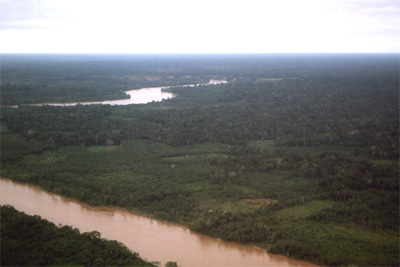
In order to qualify as a tropical rainforest, an area must receive over 250 centimeters of rainfall each year and have an average temperature above 24 degrees centigrade, as well as never experience frosts. The Amazon rainforest in South America is the largest in the world. The second largest is the Congo in central Africa, and other important rainforests can be found in Central America, the Caribbean, and Southeast Asia. Brazil contains about 40% of the world’s remaining tropical rainforest. Its rainforest covers an area of land about 2/3 the size of the continental United States.
There are countless reasons, both anthropocentric and ecocentric, to value rainforests. But they are one of the most threatened types of ecosystems in the world today. It’s somewhat difficult to estimate how quickly rainforests are being cut down, but estimates range from between 50,000 and 170,000 square kilometers per year. Even the most conservative estimates project that if we keep cutting down rainforests as we are today, within about 100 years there will be none left.
How does a rainforest work?
Rainforests are incredibly complex ecosystems, but understanding a few basics about their ecology will help us understand why clear-cutting and fragmentation are such destructive activities for rainforest biodiversity.
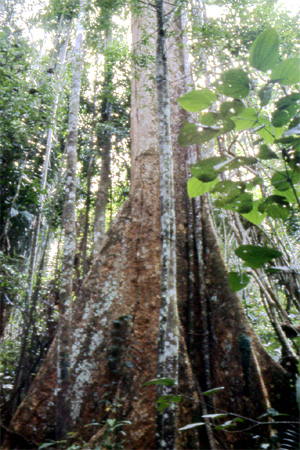
High biodiversity in tropical rainforests means that the interrelationships between organisms are very complex. A single tree may house more than 40 different ant species, each of which has a different ecological function and may alter the habitat in distinct and important ways. Ecologists debate about whether systems that have high biodiversity are stable and resilient, like a spider web composed of many strong individual strands, or fragile, like a house of cards. Both metaphors are likely appropriate in some cases. One thing we can be certain of is that it is very difficult in a rainforest system, as in most other ecosystems, to affect just one type of organism. Also, clear cutting one small area may damage hundreds or thousands of established species interactions that reach beyond the cleared area.
Pollination is a challenge for rainforest trees because there are so many different species, unlike forests in the temperate regions that are often dominated by less than a dozen tree species. One solution is for individual trees to grow close together, making pollination simpler, but this can make that species vulnerable to extinction if the one area where it lives is clear cut. Another strategy is to develop a mutualistic relationship with a long-distance pollinator, like a specific bee or hummingbird species. These pollinators develop mental maps of where each tree of a particular species is located and then travel between them on a sort of “trap-line” that allows trees to pollinate each other. One problem is that if a forest is fragmented then these trap-line connections can be disrupted, and so trees can fail to be pollinated and reproduce even if they haven’t been cut.
The quality of rainforest soils is perhaps the most surprising aspect of their ecology. We might expect a lush rainforest to grow from incredibly rich, fertile soils, but actually, the opposite is true. While some rainforest soils that are derived from volcanic ash or from river deposits can be quite fertile, generally rainforest soils are very poor in nutrients and organic matter. Rainforests hold most of their nutrients in their live vegetation, not in the soil. Their soils do not maintain nutrients very well either, which means that existing nutrients quickly “leech” out, being carried away by water as it percolates through the soil. Also, soils in rainforests tend to be acidic, which means that it’s difficult for plants to access even the few existing nutrients. The section on slash and burn agriculture in the previous module describes some of the challenges that farmers face when they attempt to grow crops on tropical rainforest soils, but perhaps the most important lesson is that once a rainforest is cut down and cleared away, very little fertility is left to help a forest regrow.
What is driving deforestation in the Amazon?
Many factors contribute to tropical deforestation, but consider this typical set of circumstances and processes that result in rapid and unsustainable rates of deforestation. This story fits well with the historical experience of Brazil and other countries with territory in the Amazon Basin.
Population growth and poverty encourage poor farmers to clear new areas of rainforest, and their efforts are further exacerbated by government policies that permit landless peasants to establish legal title to land that they have cleared.
At the same time, international lending institutions like the World Bank provide money to the national government for large-scale projects like mining, construction of dams, new roads, and other infrastructure that directly reduces the forest or makes it easier for farmers to access new areas to clear.
The activities most often encouraging new road development are timber harvesting and mining. Loggers cut out the best timber for domestic use or export, and in the process knock over many other less valuable trees. Those trees are eventually cleared and used for wood pulp, or burned, and the area is converted into cattle pastures. After a few years, the vegetation is sufficiently degraded to make it not profitable to raise cattle, and the land is sold to poor farmers seeking out a subsistence living.
Regardless of how poor farmers get their land, they often are only able to gain a few years of decent crop yields before the poor quality of the soil overwhelms their efforts, and then they are forced to move on to another plot of land. Small-scale farmers also hunt for meat in the remaining fragmented forest areas, which reduces the biodiversity in those areas as well.
Another important factor not mentioned in the scenario above is the clearing of rainforest for industrial agriculture plantations of bananas, pineapples, and sugar cane. These crops are primarily grown for export, and so an additional driver to consider is consumer demand for these crops in countries like the United States.
These cycles of land use, which are driven by poverty and population growth as well as government policies, have led to the rapid loss of tropical rainforests. What is lost in many cases is not simply biodiversity, but also valuable renewable resources that could sustain many generations of humans to come. Efforts to protect rainforests and other areas of high biodiversity is the topic of the next section.

IMAGES
VIDEO
COMMENTS
Living World - Amazon Case Study. The Amazon is the largest tropical rainforest on Earth. It sits within the Amazon River basin, covers some 40% of the South American continent and as you can see on the map below includes parts of eight South American countries: Brazil, Bolivia, Peru, Ecuador, Colombia, Venezuela, Guyana, and Suriname.
Environmental impact of Amazonian deforestation. Photosynthesis by trees in the Amazon absorbs 5% of the world's carbon emissions each year (2bn tons of CO2). 100 billion tonnes of carbon are stored in the wood of the trees in the Amazon.
Case study of a tropical rainforest setting to illustrate and analyse key themes in water and carbon cycles and their relationship to environmental change and human activity. Amazon Forest The Amazon is the largest tropical rainforest on Earth.
Comprising an area of over 10 million hectares, this is the largest preserved area in the Peruvian Amazon. It is recognised as being one of the most biodiverse regions in the world. The 60 or so local communities depend on the rainforest for water, food, medicine, clothing and housing.
AQA GCSE Infographic giving you case study information on animal and plant adaptations in Tropical Rainforests. This video covers the social, economic and environmental impacts and also...
Case study of a tropical rainforest setting to illustrate and analyse key themes in water and carbon cycles and their relationship to environmental change and human activity. Describe, explain and evaluate a number of themes relating to water and climate in the Amazon tropical rainforest, including: how changes in the water and carbon cycles ...
A video explaining all aspects of the Tropical Rainforest case study for the new GCSE Geography specification. The video examines the location and climate characteristics of the TRF, the ...
Study with Quizlet and memorize flashcards containing terms like Where is the Amazon Rainforest?, Where is Brazil?, What is the Amazon Rainforest being exploited for? and more.
Study with Quizlet and memorize flashcards containing terms like Amazon River basin, Amazon Rainforest, 10 million and more.
In order to qualify as a tropical rainforest, an area must receive over 250 centimeters of rainfall each year and have an average temperature above 24 degrees centigrade, as well as never experience frosts. The Amazon rainforest in South America is the largest in the world.